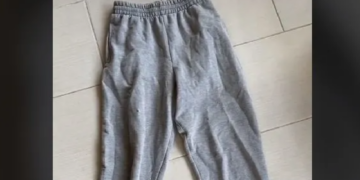Top Gun is one of those classic action movies that, 36 years later, people still talk about as if it came out just yesterday. And after a three-and-a-half decade wait , the world was treated to its direct sequel, Top Gun: Maverick .
Premiering right in time for Memorial Day weekend, the film proved to be a box office success, grossing over $569 million in just two weeks after its release on May 27th.
Naturally, it’s hard not to be curious about the film’s production . Here are some pretty neat behind-the-scenes facts about Top Gun: Maverick .
The film was delayed five times.
Originally, the film was supposed to be released July 19th, 2019. But with filming only wrapping up in the spring of that year , it got pushed back to June 26,th 2020. Because of the Covid-19 pandemic, that ended up not happening.
The release got pushed back to December 23rd, 2020.
It then had two potential 2021 release dates: July 2nd and November 19th. But it got pushed back again and again, before finally releasing on May 27th, 2022. Luckily, the release date uncertainty didn’t stop it from being a box office hit!
The film actually began production back in 2012.
Delays are, in fact, nothing new to the sequel. Beginning production in 2012, everything came to a halt when Tony Scott, director of the original film, died tragically. It would take five years for production to start back up again, in 2017.
Miles Teller wasn’t the only actor considered for the role of Rooster.
Teller, alongside Nicholas Hoult and Glen Powell, were all flown to Tom Cruise’s home to perform a chemistry test. Though Teller ultimately landed the role, Powell was cast to play Hangman in the film.
Teller was also the one to come up with “Rooster.”
According to Teller, the new actors were the ones to come up with their call signs . As his character is the son of Nick “Goose” Bradshaw, he decided on Rooster to sort of keep it in the family.
The U.S. military was involved in the film’s production.
The U.S. Department of Defense (DOD) Entertainment Media Office worked closely with cast and crew, providing the very jets and carriers used in the film, as well as the technical expertise and know-how to use them.
The DOD has actually helped with plenty of movies in the past.
In an interview with the Washington Post, retired Air Force Lt. Col. Glen Roberts, who leads the DOD’s Entertainment Media Office, stated that the department actually helped with the 1927 film Wings , which is the first movie to ever win the Best Picture Academy Award.
And the equipment rentals were pretty worth it.
It cost the producers $11,000 per hour to rent the F/A-18 jets that were used in the film. Surprisingly enough, this is still way cheaper than having to buy them outright.
And no, using CGI to recreate the jets wasn’t an option.
It’s a pretty well-known fact that Tom Cruise does his own stunts. Which means that the flight sequences had to be real. Though CGI and green screens were used (sparingly), the cast had to undergo G-force training in order to shoot certain scenes in the air.
Though the actors got to ride in the F/A-18s, they didn’t actually pilot them.
Though it’s true that Tom Cruise is a pilot, and has WWII-era planes of his own, he (and the rest of the cast) weren’t allowed to actually pilot any of the jets .
Instead, for scenes showing a character in-flight, they were actually in the passenger seat.
And they rigged a camera to make it look like the stars were the ones doing the flying. It seems like that extra attention to detail was worth it.
Cruise did get to actually fly in the film, though.
Cruise, who is the owner of a P-51 Mustang in real life, can be spotted flying that same plane in the final minutes of the film. It looks like he actually piloted it himself.
Tom Cruise also flew a helicopter to the film’s premier.
Because the long-time action star is a stickler for theatrics, Cruise flew and landed a helicopter (himself) onto the USS Midway in San Diego, just in time for the premiere.
The film’s budget was massive, too.
Remember how renting one of those F/A-18 jets cost the producers $11,000 per hour? That’s kind of a drop in the bucket compared to the films entire budget, which was over $170 million .
And it completely eclipses the budget of the original film.
The 1986 Top Gun cost filmmakers around $15 million to make, not even 10% of the sequel’s budget. And that was a lot for the ’80s, but still.
Luckily, Top Gun: Maverick more than made that money up in the box office.
The shirtless volleyball scene had to be filmed twice.
The shirtless volleyball scene from the 1986 film was so iconic, even people who weren’t alive when the movie came out (like me) know about it. So they just had to include a replica of the scene in the sequel.
According to Glen Powell, Tom Cruise decided what they’d shot wasn’t good enough.
“‘We gotta shoot it again. It wasn’t good enough,'” Powell recalls Cruise saying. “‘We’re gonna shoot it again.’ And then everybody’s back in the gym again, day and night.”
Shooting a scene like that isn’t as easy as it looks.
Aside from Tom Cruise reprising his role as Maverick, Val Kilmer is back as well.
Originally, it was thought that Kilmer’s return as Iceman would be difficult due to him having lost the ability to speak after undergoing throat cancer treatment done in 2014.
But because technology is much more advanced now than ever before, producers found a workaround.
Using advanced AI technology and archived footage of Kilmer’s voice, they were able to replicate his speech, and used that for his dialog in the film. That’s just amazing!
“Top Gun: Maverick” is Tom Cruise’s highest-grossing film (domestically).
In its first two weekends, the film grossed over $291 million domestically, passing the record set by Cruise’s film War of the Worlds in 2005 . As of the time of writing, the film is on track to grossing $900 million worldwide during its theatrical run.

















































